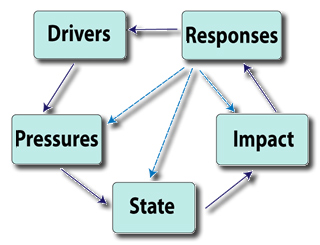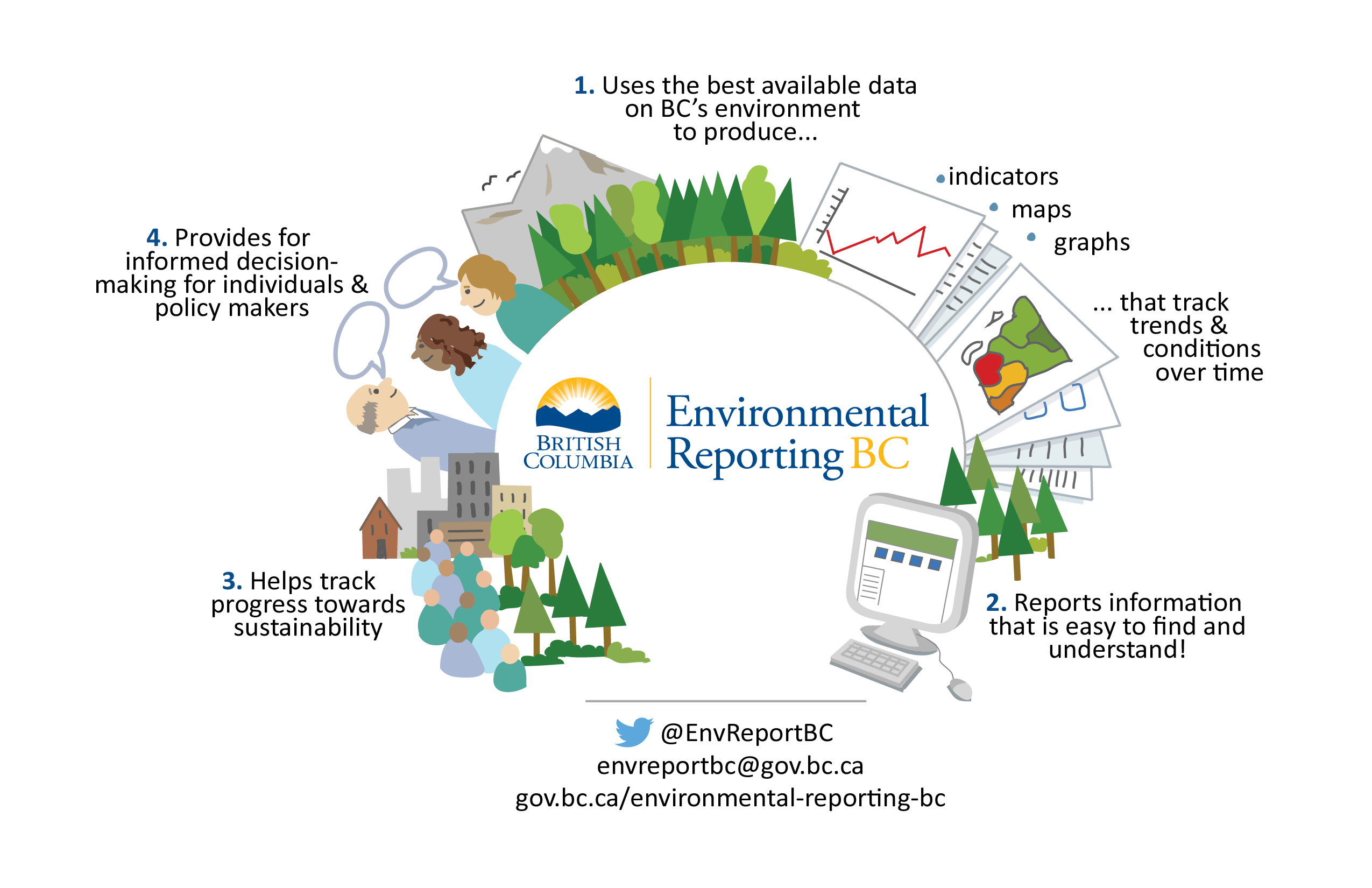About Environmental Reporting
Environmental reporting refers to the presentation of unbiased scientific data and information relating to the environment, providing insights into the State of the Environment and the State of Forests in British Columbia.
Environmental reporting takes scientific information and makes it accessible to non-technical audiences. One goal of environmental reporting is to provide the basis for informed decision making so that individuals, agencies and policy-makers can take positive action.
Environmental Reporting BC Principles:
- Based on open and best available data, information, and knowledge
- Based on rigorous, open and repeatable scientific investigation
- Includes consideration of community, social and traditional knowledge
- Utilizes leading edge science communication practices
What is an Environmental Indicator?
Environmental indicators are simple measures that tell us what is happening in the environment. They visually represent the status or trends of different aspects of the environment. Some indicators also measure human activities which affect the condition of the environment and our responses to this change.
Environmental indicator criteria and frameworks have been used to help in their selection and presentation. Some key considerations for developing environmental indicators include being:
- Scientifically credible and accepted by experts, stakeholders and end users
- Relatively simple and cost effective
- Representative of key issues and broader impacts or effects
- Responsive to changes within a useful reporting time scale
- Useful for prediction
- Relevant to needs of policy-makers or enable individuals to make meaningful decisions
- Compatible with other indicators to present an overall picture
- Readily communicable, interesting, clear and easy to understand
DPSIR and PSR Indicator Reporting Frameworks

The Driver-Pressure-State-Impact-Response (DPSIR) framework for environmental reporting, an expansion of the original Pressure-State- Response (PSR) Framework, describes human interactions with the environment by looking at the causes (drivers and pressures) and effects (state and impacts) of these activities and the responses society takes to address them. Environmental Reporting BC employs the DPSIR and PSR frameworks for reporting on the state of the environment.
- Drivers or driving force indicators show the underlying pressures related to socioeconomic and political agents of change, such as population growth, GDP, and consumption.
- Pressure indicators are measures of things that directly affect the quality and quantity of environmental goods and services, such as toxic emissions, pesticides, waste and harvesting of resources (fish, timber).
- State indicators show the biological, chemical and physical state or condition (quantity and quality) of an ecosystem or one or more of its components, such as distribution of forest cover, ambient levels of ground level ozone, number and diversity of species. State indicators may show condition at one point in time or as a trend over time.
- Impact indicators show the direct effects of environmental pressures on humans, economies and ecosystems, such as shellfish closures due to sewage, exposure to health risks due to particulate matter.
- Response indicators are a measure of society’s response to environmental problems, such as legislation, regulation, stewardship, protected areas.
Other Reporting Programs
International State of Environment Reporting Programs
Canadian Environmental Indicator Reporting Programs
- Environment Canada – Canadian Environmental Sustainability Indicators
- Canadian Biodiversity: Ecosystem Status and Trends 2010
- Canadian Index of Wellbeing


